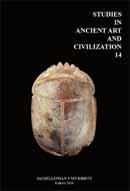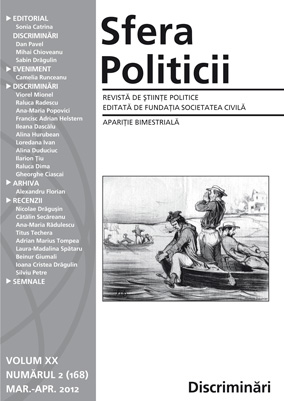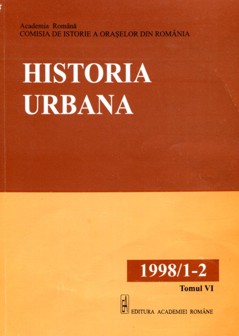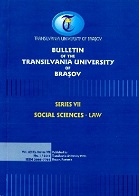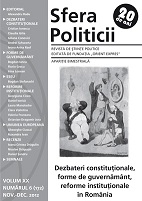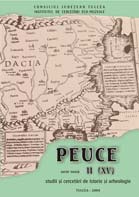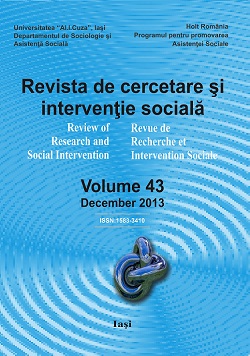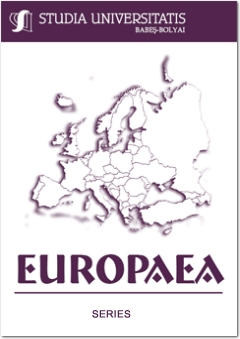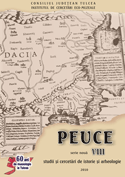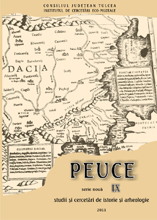UBER DIE HERKUNFT UND VERBREITUNG DER OHRRINGE MIT SPIRALVERZIERUNG AUS DEM VORROMISCHEN DAKIEN
DESPRE ORIGINEA ŞI DIFUZIUNEA CERCEILOR CU ORNAMENTE SPIRALICE DIN DACIA PREROMANĂ
Die Ohrringe mit Spiralverzierung sind für die östlichen Gegenden Dakiens eigen (Abb. 3) und wurden ins 1. Jh n Chr. datiert. Drei Exemplare aus Bronze wurden in der dakischen Siedlung von Răcătău entdeckt (Abb. 1/2-3) Weitere drei Sttücke aus Bronze stammen aus sarmatischen Gräbern, die unlängst in Bădragii Vechi in der Republik Moldawien untersucht wurden. Ein silberner Ohrring wurde in der dakischen Festung von Piatra Craivii entdeckt, in der Siedlung von Popeşti wurde ein weiteres Exemplar gemeldet, das in dieselbe Gruppe eingegliedert werden könnte. Schließlich wurde ein Ohrring mit Spiralenverzierung in einem sarrnatischen Grab in Szolnok entdeckt (Abb 1/1 ), ein weiteres Exemplar aus Silber, das über längere Zeit verwendet wurde, stammt aus dem Gräberteld von Soporu de Campie, in der Provinz Dakien und wurde an das Ende des 2 Jh n. Chr datiert. Die Herkunft der Spiralverzierung auf den Ohrringen aus Dakien kann in der Verzierung der keltischen Fibeln vom Mitellatenetyp mit Achterschleifen (Abb. 1/9-12) gesucht werden. Diese Fibeln sind für das mittlere Donaubecken spezifisch (Abb. 2) und wurden an das Ende von LT B2 und in LT Cl (vom zweiten Viertel des 3 bis zu Beginn/ins erste Viertel des 2 Jh. v Chr.) benutzt. Die Verbreitung nach Osten dieser Fibeln ist sehr bedeutsam. Zwei Exemplare wurden in der Verbreitungsgegend der Kultur Zarubincy gefunden. Sie sind morphologisch von den "klassischen" Sttücken im keltischen Milieu verschieden und zeitlich sind sie später (die letzten drei Viertel des 2. Jh v Chr). Bezüglich der Chronologie stammt eine bedeutende Fibel aus einem sarmatischen Grab, das in Khopersk, in der Region Krasnodarsk, getunden wurde (Abb. 1/8). Es handelt sich um ein hybrides Stück: auf einer Lanzenfibel wurde auch die Achterschleife durchgeführt. Wenn man die Chronologie der Lanzenfibeln (Ende des 2.- 1 .Jh v. Chr.) in Betracht zieht, ist anzunehmen, daß die Achterschleife eine lange Zeit im sarmatischen Milieu nördlich des Schwarzen Meeres andauerte. Weitere zwei Fibeln mit Spiralverzierung auf dem Fuß, die bereits die Verzierung auf den dakischen Ohrringen vorwegnimmt, wurden im sarmatischen (Abb. 1/7) und spätskythischen Milieu im nordpontischen Bereich entdeckt. Im Laufe des I. Jh. v. Chr. ist die Spiralverzierung auch auf Ringen anzutrefien, wie jener aus der dakischen Siedlung von Grădiştea östlich der Karpaten (Abb. 1/4). Im I. Jh. n. Chr erscheint die Spiralverzierung auf Ohrringen. Das Erscheinen dieser Ohrringe östlich der Karpaten ist kein Zufall In dieser Gegend wurde im Laufe des I. Jh. n. Chr. ein gemischtes dakisch-sarmatisches Kulturmilieu festgestellt. In dieser Atmosphäre erschien eine Reihe von Schmuckstücken, die für den ostdakischen Bereich eigen sind und lokale mit sarmatischen Elementen vermengen. Aus der ostkarpatischen Gegend verbreiteten sich die Ohrringe mit Spiralverzierung nach Westen, sowohl ins sarmatische Miliell der Theißebene als auch in Siedlungen aus Dakien.
More...
